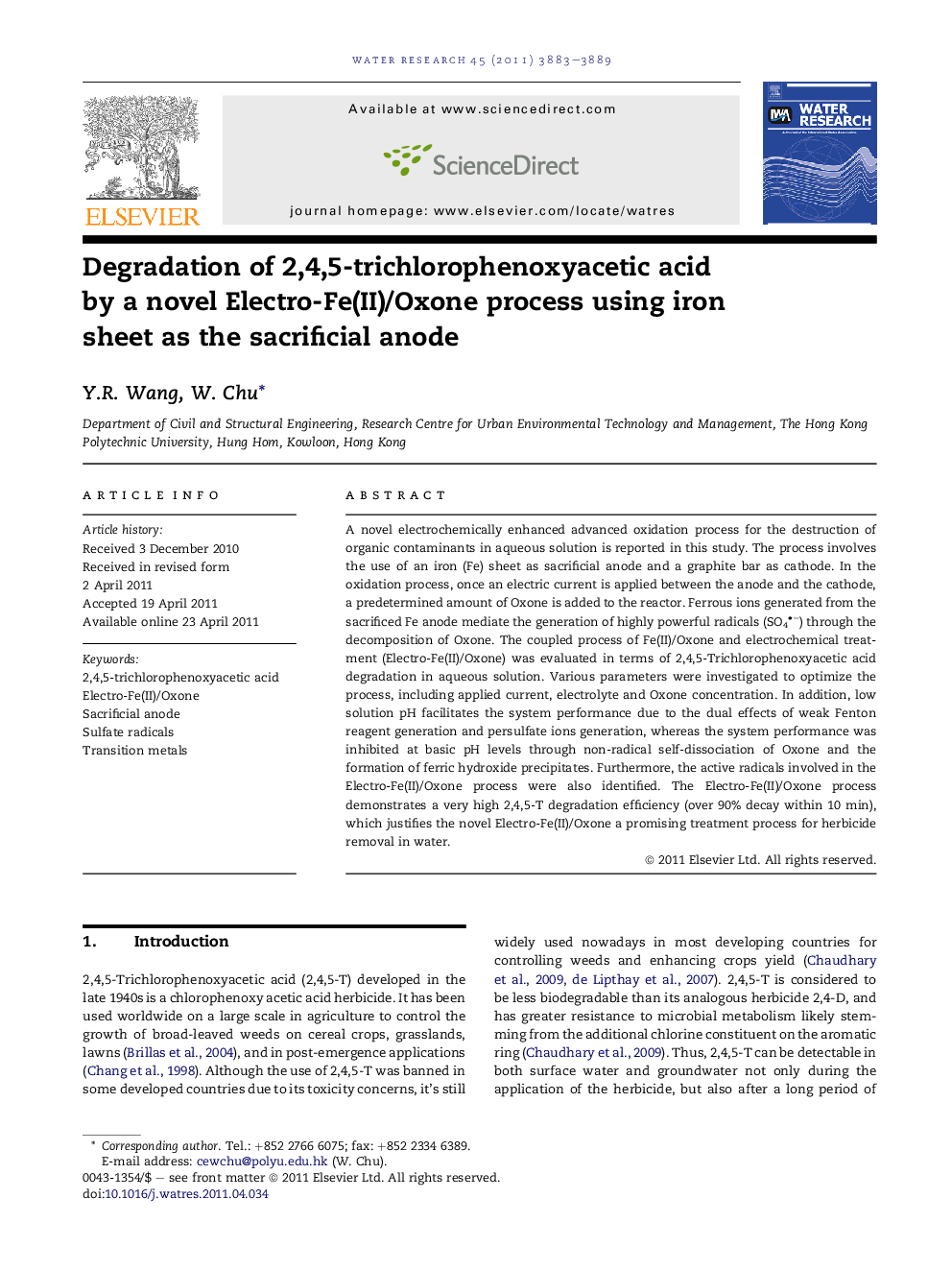| Article ID | Journal | Published Year | Pages | File Type |
|---|---|---|---|---|
| 4484087 | Water Research | 2011 | 7 Pages |
A novel electrochemically enhanced advanced oxidation process for the destruction of organic contaminants in aqueous solution is reported in this study. The process involves the use of an iron (Fe) sheet as sacrificial anode and a graphite bar as cathode. In the oxidation process, once an electric current is applied between the anode and the cathode, a predetermined amount of Oxone is added to the reactor. Ferrous ions generated from the sacrificed Fe anode mediate the generation of highly powerful radicals (SO4•−) through the decomposition of Oxone. The coupled process of Fe(II)/Oxone and electrochemical treatment (Electro-Fe(II)/Oxone) was evaluated in terms of 2,4,5-Trichlorophenoxyacetic acid degradation in aqueous solution. Various parameters were investigated to optimize the process, including applied current, electrolyte and Oxone concentration. In addition, low solution pH facilitates the system performance due to the dual effects of weak Fenton reagent generation and persulfate ions generation, whereas the system performance was inhibited at basic pH levels through non-radical self-dissociation of Oxone and the formation of ferric hydroxide precipitates. Furthermore, the active radicals involved in the Electro-Fe(II)/Oxone process were also identified. The Electro-Fe(II)/Oxone process demonstrates a very high 2,4,5-T degradation efficiency (over 90% decay within 10 min), which justifies the novel Electro-Fe(II)/Oxone a promising treatment process for herbicide removal in water.
► A new approach named as “Electro-Fe(II)/Oxone” process is investigated. ► Effects of some critical parameters were investigated and optimized. ► Radicals quenching study performed to identify the predominant active radicals. ► Experimental results justify Electro-Fe(II)/Oxone a promising treatment process.
